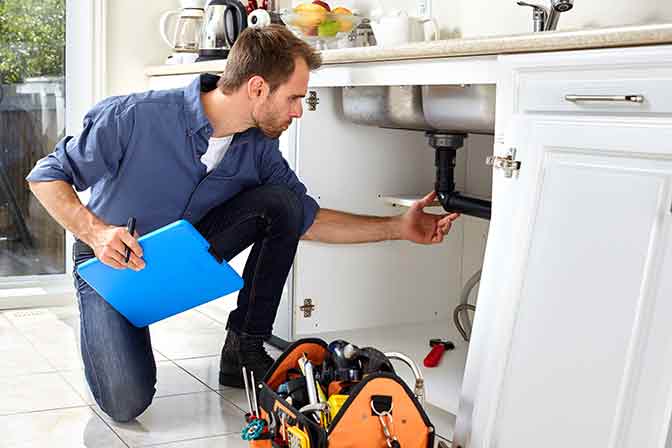11 Spring Plumbing Tips – Okay, you know you should prepare your HVAC system and lawn for spring. But does your plumbing also need you to do anything to prepare it for spring? Yes, it does. These tips from TrueNest Property Management will help you avoid plumbing issues when winter is over, and spring is in full swing. In addition, it will get your home in shape for summer and avoid costly repairs.
Tips to help you get your plumbing ready for spring
Start with your yard
Ensure your storm drains can handle large amounts of draining water by clearing them of any leftover debris from fall. Doing this will help you avoid flooding. Look around your yard and remove any winter debris that could get washed into the storm drains to block them.
Check your external drainage system
Before the spring rains begin in earnest, you want to check the condition of your external drainage system. Check yard drains, roof gutters, and downspouts for signs of damage. Remove debris inside the gutter and make sure downspouts are facing away from the foundation of your house. Ensure the ground around your home slopes away from the base of the building to prevent flooding.
Check outdoor faucets and sprinklers
Pipes left outside may freeze during winter and break as a result. But you may not notice the damage until the weather gets warmer. Inspect outdoor pipes for signs of leaks. Check hose bibs and water supply lines for signs of cracking and splits. Do this before turning on the hose or faucet. While they are running, also check them for signs of damage.
Test the sump pump
You are about to enter the season when the sump pump in your basement is going to be called into action frequently. You want to make sure the equipment is ready to handle the demand. The sump pump has lain idle since the fall and may sustain damages. To avoid unpleasant sump pump failures, inspect and test-run the sump pump.
Check least used drain
Whether they are inside a guest room, the basement, or some infrequently used part of the house, you don’t want to overlook your least-used drains. To test them, pour a bucket of water into it and see how fast the water drains. That will also fill the trap with water and keep terrible odors out of your home. Listen for gurgling sounds when you do this.
Check the water heater
There are several steps you have to take to ensure the efficient function of the water heater. Firstly, you want to remove deposits that hamper the water heater’s efficiency by flushing the appliance. You also want to test the pressure relief valve by moving it up and down several times. Lastly, adjust the temperature settings to what is suitable for spring.
Check water valves in your home
Walk through your home and locate each water valve in the house. People often forget water valves until they have an emergency and need to shut off the water supply. But seldom-used valves can get stuck. You can prevent this by simply turning the valve off and on once in a while. It would be best to do this for controls outside the house.
Install or check flood alarms
If you don’t already have a flood alarm installed in your home, you need to do it ASAP. These simple devices can save a lot of money. Even if you have a reliable sump pump in the basement, you still need flood alarms for places like bathrooms. Check that installed flood alarms are working, and if they are not, you will need to replace their batteries.
Check your faucets
Go through your home and run every faucet in the house. Let them run at once and check the overall water pressure of the house. Run the faucets on cold and hot water if they have not used them for a while. Look for faucets running at low pressure; this could be a sign of leaks somewhere in your plumbing. Also, check faucets for damaged valves and aerators.
Inspect all exposed pipes
If you did not winterize the pipes under your bathrooms, kitchen sinks, water supply lines to appliances, and toilets, you need to inspect them. These exposed pipes are prone to freeze and burst during winter. But the damage is not always evident until much later. Early detection of any damage to your pipes will save you a lot of money.
Check your toilets
Check your toilet for leaks by dropping some food coloring in the tank and waiting ten minutes to see if the color finds its way into the toilet bowl. If you find coloring in the toilet bowl, there is a leak. You also want to check the flushing mechanism on the toilet to make sure it is working.
